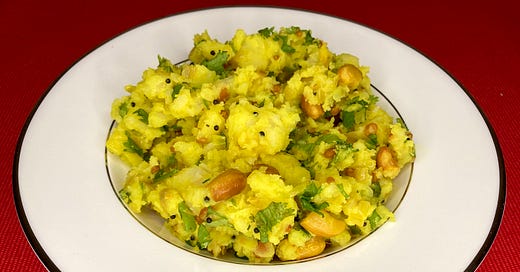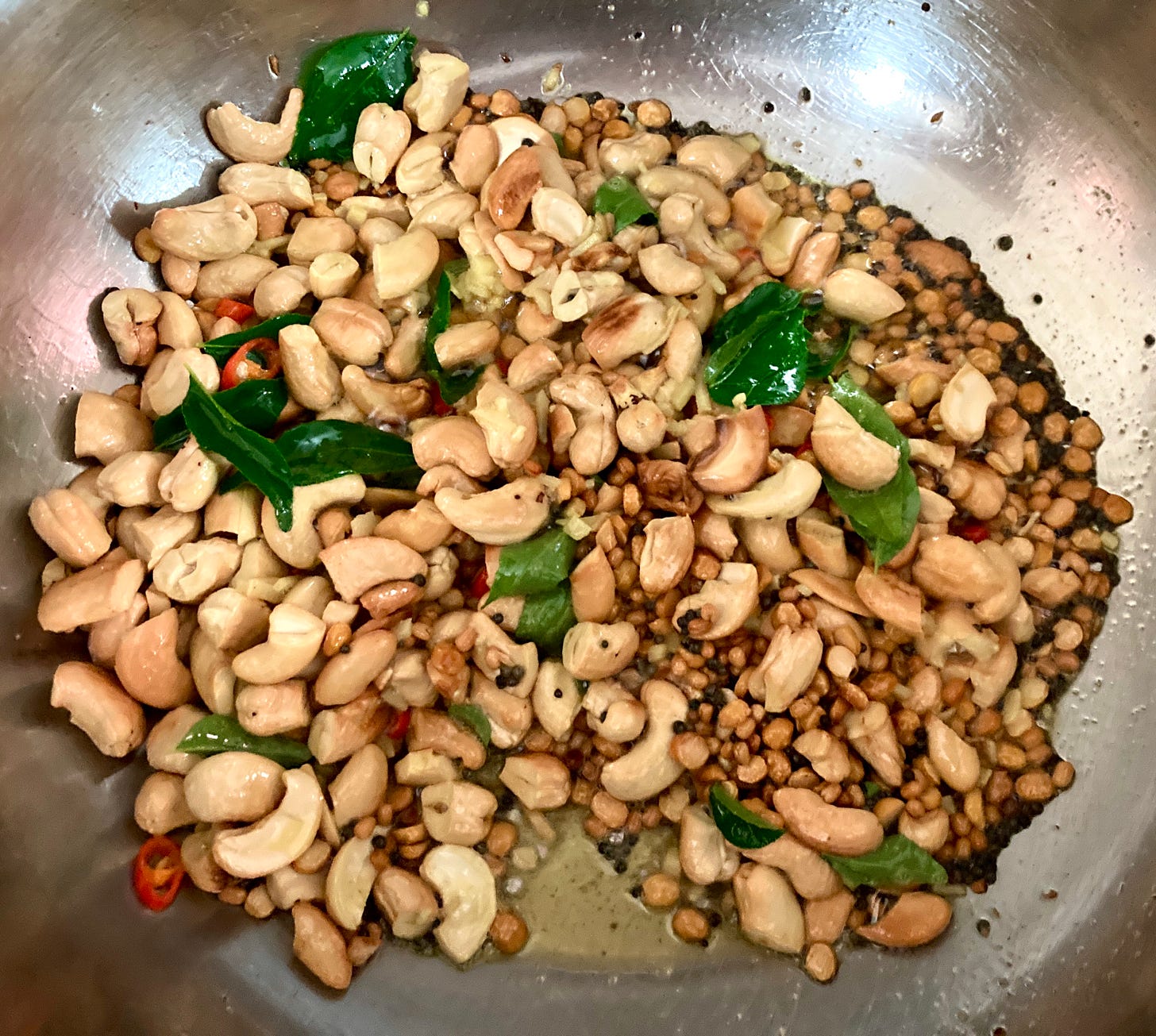I am thirteen. In boarding school in Bengaluru, then Bangalore. My first real time living in India (earlier had been when I was too young to remember much). The Bishop Cotton’s Girls’ High School, chosen by my parents for its reputation – in my dad’s mind, there really was no other choice. Anyhow, my 13-year-old self had been transported to this new world from Aden, Yemen, where I had spent the previous five or six years. My parents are still in Aden.
At lunch in the dining hall with about two hundred other girls. I sit at a table with the other 8th grade girls, with many of whom I also share an enormous dorm. Lunch is strictly at 12:30, a bell rings and we all enter the dining hall. At the beginning of each year, girls are asked to choose between vegetarian and non-vegetarian food, and if the latter, what non-veg we are comfortable partaking in: the obvious egg (yes, considered non-veg), chicken, mutton, and then for me, a very new carnivore (though I ate eggs), the less obvious liver and brain (lamb). I choose egg and chicken. And with whatever non-veg option there is for the day for the non-veg girls, there is always rasam.
My first afternoon there. The bowls of liquid on each table look like no rasam I have ever seen, and I timidly ask what the stuff in them is; it smells pretty good. Pepper Water, I am told. Huh? I taste some after the mandatory Grace. It is vaguely familiar. Oh, rasam? I ask. Don’t be a villager, I am reprimanded. It is Pepper Water.
And that is my first encounter with the term. And the attitude.
Fast-forward three decades. I am watching Anthony Bourdain when he was still on the Travel Channel, an episode on Sri Lanka. He is staying in a hotel that he describes as a remnant of a colonial empire. There were loads of buildings like this in the Bangalore of my school days. Gorgeous old buildings surrounded by trees. The Victoria Hotel, near my parents’ house, was a great example. Gone now, replaced by large glass-walled malls. That’s for another post.
Bourdain explores the Burgher community, and goes into a club, a community center, a place he describes as “fervently hanging onto its past, while trying to be relevant” in today’s post-colonial world. The people interviewed in parts of the episode are those who refer to themselves as Burghers and not Sinhalese, even though for most, the colonial past is something they likely don’t remember. At least two generations before them. They pride themselves on being Burghers because terms like “honesty and integrity” are characteristic of Burghers, they explain. Hmm. I finish the episode and think back to boarding school. I’ve thought about the issue numerous times since, but not the particular boarding school incident. Different colonizers, same attitude in those left behind, even generations later.
What exactly the boarding school interaction meant, my 13-year-old brain obviously couldn’t comprehend; I probably even laughed. My errr… slightly older brain of today cringes even as it strives to understand this attitude in all its complexity. Does the attitude stem from a cry for a better life – that English provides? I mean, is there now, as Macaulay described in his Minute on Education in India, “a class of persons, Indian in blood and colour, but English in taste, in opinions, in morals, and in intellect”? Or is it clinging to a past that doesn’t exist anymore, and that one wants because it is somehow inherently better? English makes everything better, right? - I mean, honesty and integrity? Or is it a combination? Or something else?
And if English does, indeed, make everything better, what about the millions in India who don’t have access to it? Or don’t have access to to the “Pepper Water, not rasam”, and the “everything Indian is a curry” variety?
And in delving into the complexity of the issues, there is the accompanying guilt I feel. I, an English teacher, an English teacher-trainer, a sociolinguist. Guilt about my part in perpetuating a system. Trying to reconcile my strong advocacy of the recognition of diversity in Englishes, and my promotion of Indian Englishes as educational models, on the one hand, and knowing that I do this from my own seat of privilege, on the other. My own English is privileged.
My fervent hope that more girls than not in the Bishop Cottons Girls’ School of today (which is, actually, the Bishop Cotton Women’s Christian College now) do now call it rasam; perhaps that is the optimist in me.
Though a product of the Bishop Cotton Girls’ School, obviously not everything Indian is a curry to me. And rasam is rasam, and not pepper water. While I am still not giving you the recipe for rasam, I am giving you what I have always called a curry. Today’s we have Masala Dosa Potatoes – the potato curry (more on this next week…) that goes into masala dosas. Not doing dosas yet, that will be in a few weeks. Then why on earth am I giving you the potato stuffing? Because it is absolutely delicious eaten on its own, or in a grilled sandwich (carbs on carbs, I know, I know, but you know you want that occasionally…), the curry also makes the best damn breakfast potatoes. And most of all, because my eight-year-old asked for a masala dosa for dinner last week instead of fish fingers and chips. Because he loves the potatoes so much. I mean. Talk about a moment for mum!
And… try and whip up a batch of these before you get next week’s post – we’ll make bondas next week, delicious balls of this same potato curry coated in chickpea batter and fried. In much of the world, fall’s setting in. Bondas and an accompanying chutney - the perfect snack.
Masala Dosa Potatoes
Ingredients (serves 6; vegan, vegetarian)
1. 1kg potatoes
2. 2 cups finely diced onions – doesn’t matter what color
3. 3 Tbsp vegetable oil
4. 1½ tsp mustard seeds
5. 1½ Tbsp urad dhal*
6. 1½ Tbsp channa dhal*
7. ½ to ¾ cup of raw cashew nuts, halved or quartered (if you’re allergic to nuts, by all means leave them out)
8. 2 sprigs of curry leaves, if available
9. 1 large jalapeño/2 green chilies of your choice – or more or less as per your taste
10. 1 Tbsp grated ginger or 1tsp ground ginger (fresh is better, but the ground stuff does fine)
11. ½ tsp turmeric
12. 3 squeezes of asafoetida
13. 2 tsp salt
14. 5 tsp fresh lime juice
15. ½ cup fresh chopped cilantro (if you don’t like it, leave it out)
*For all the recipes I have given you so far, if you have all the ingredients but these two dhals, do try and make the dishes; they won’t taste exactly the same, but they’ll still be good. And you’ll still be cooking something great.
Method
1. Boil the potatoes till they are tender. Peel them, and mash them – but roughly. You do not want mush, you don’t want smooth mashed potatoes.
2. Heat the oil in a large skillet or pot. When the oil is hot, add the mustard seeds. When they start popping, immediately turn the heat down to low.
3. Once the mustard has almost finished popping, add the urad and channa dhals. Stir for about a minute and then add in the cashew nuts. Continue stirring on a low flame.
4. Allow both dhals and cashews to turn a pretty golden brown. Once this happens (should take a couple of minutes), add the asafoetida, ginger, jalapeno, and curry leaves. Stir all these for about 30 seconds. And as I mentioned last week, take a second to appreciate the glorious aromas emanating from your kitchen.
5. Add the turmeric and chopped onions. Sauté on low to medium heat for about 5 minutes. Add about 1 tsp of the salt. The onions should soften and become translucent but not brown or caramelize; caramelization alters the taste completely, and while it is lovely in other dishes, it isn’t here.
6. Now add in the mashed potatoes and the rest of the salt. Cook together on low to medium heat for another 5 minutes to allow the flavors to marry.
7. Turn off the heat, add the lime juice and cilantro. Stir and serve hot.






This recipe was a hit! I was going to save some for the next recipe, but it got devoured. I think the tempering got away from me a bit with my electric (boo) stove top, so the lentils were a little crunchy, but the flavor and the aromas in my house were amazing. I also spent a good hour just taking tangents on the cultural references that were unfamiliar to me. Thanks for sharing and keep these coming!
This was the bomb!!! Just needed to wrap it up in samosa pastry and deep fry and I'd be back in the Middle East. Thanks so much! This will be a staple for us.